January 6, 2016 – We are very excited about our new granddaughter, Sophie Grace Lamont, born at 11:55 January 4th in Kelowna, BC. Huge congratulations to our Daughter Kirsty and Son-in-law Jason. This has been a long time coming and we are so happy to be Grampa & Nana.
Well tomorrow we start our mainland Mexico adventure, something Lisa and I have been longing for some time. We are crossing at Pharr, Texas and heading due south past Tampico. We know the sketchiest of our travels will be the next 2 days however I would trade some anxiety for what wondrous sites and experiences anytime.

The past couple of weeks have seen us leave our friends Fred & Rita who are heading to Florida from an RV Park in San Marcos, North East of San Antonio then travelling across the City of San Antonio to the Hidden Valley RV Park on the South West end of town, what a gem. Lots of green space, a stream nearby, birds everywhere and the freeway and railway tracks were so far away you could hardly hear them.
While we were staying at the Hidden Valley RV Park we made several trips into San Antonio. The city was actually easy to get around give the number of perimeter freeways and lateral roads. Really amazing given it is the 7th largest city in the US, almost 2 million people. We walked the downtown core that included the Alamo, River Walk and many other interesting sites, lots to see as they have preserved many of the historic buildings which adds character to the town. We also took a Hop On Hop Off Bus Tour around the city, we had a great guide who was very entertaining and knowledgeable. One stop was Augie’s BBQ, where we had real Texas BBQ Ribs, dry rub and very tasty, no skimping on the amount either. We picked up the bus and ended at the Mexican Mercado, over 300 shops that included lots of the same old, but also some very elaborate and high end merchandise. At the entrance of the Market there was an Art Exhibition featuring trees of life featuring 2 artists. Great show and free to boot, as was most of the Alamo experience.

We made arrangements to take Lulu to PETCO for a trim and shampoo in town, disappointed to find out her Canadian Rabies Documentation was not acceptable, US shots only! Good enough to bring the dog into the country, but not for a haircut at PETCO. We took our business elsewhere. We did find a hair salon for Lisa, no passport required, very pleased with the outcome which is not common in California. New Years Eve we were invited to a fire at the neighbours, folks from Ontario. Mike & Kelly Steinfort showed up on Saturday and we headed for Pharr on Monday. When we arrived Roland & Janice were already there, the next day the rest of the gang rolled in, they had been dry camping for nine (9) days, wow. We all had some last minute shopping to do, preparation’s to make and maybe a happy hour or two.
We have a wonderful group and really looking ahead to sharing our adventure with all of them.

Did you know?
The Party of the Democratic Revolution (Spanish: Partido de la Revolución Democrática, PRD) is a social democratic political party in Mexico that champions democracy. The PRD is one of the three major political groups in Mexico, the others are the Institutional Revolutionary Party (Spanish: Partido Revolucionario Institucional, PRI) and the National Action Party (Spanish: Partido Accion Nacional, PAN). The PRD is a member of the Broad Progressive Front alliance and one of two Mexican affiliates of the Socialist International. The PRD originated from the Democratic Current, a political faction formed in 1986 from the PRI. The PRD was formed after the1988 electoral fraud which sparked a movement away from the authoritarian rule of the PRI.
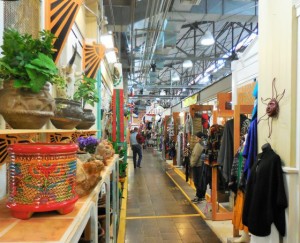
Early Days: Break from PRI (1986-1988)
The PRD has its origins with the leftist’s members of the PRI, Institutional Revolutionary Party. The PRI had dominated Mexican politics since its founding in 1929. In 1986, three PRI members-Rodolfo González Guevara, Porfirio Muñoz Ledo, and Cuauhtémoc Cárdenas– formed the Democratic Current, a political faction within the PRI. The Democratic Current aimed to pressure the PRI to become a more democratic party and to address the issue of national debt including the social effects of the economic crisis that came from attempting to pay that debt. The Democratic Current was also against , in which the people in power had not held public office and were scholars that were often educated abroad. Under the Miguel de la Madrid presidency which lasted from 1982-1988, the PRI and Mexico were moving towards a technocracy especially since de la Madrid was a technocrat himself. The Democratic Current did not have many technocrats and was thus left out of the decision making process. This political marginalization led the Democratic Current members to be more vocal about their concerns because they did not have a position of power to protect within the PRI.

Cuauhtémoc Cárdenas Solórzano, Founder of the PRD
After public criticisms and debate between the Democratic Current and the PRI, ten Democratic Current members signed Working Document Number One which was the official beginning of the Democratic Current. However, the PRI refused to acknowledge the Democratic Current as an organization unless they joined a union, which was allowed in the PRI. The forming of a group that was not united because of work, but because of difference in ideology within the PRI caused fear of division within the party. Once de la Madrid’s six year term as president was coming to a close, the PRI chose six possible candidates for president and notably did not chose Cardenas. The PRI had no process to apply as candidate so Cardenas could not run as a candidate for president. On October 4, 1987 Carlos Salinas de Gortari was ultimately chosen as the PRI candidate. Gortari did not embody anything that the Democratic Current wanted and many of the Democratic Current members left the PRI including Cárdenas during November 1987. Some Democratic Current members went on to support Cárdenas in his 1988 quest for presidency and help in the founding of the PRD.

1988 Presidential Election
On October 12, 1988 Cárdenas became the Authentic Party of the Mexican Revolution presidential candidate. Cárdenas still remained an independent candidate due to electoral laws which meant that many parties could choose Cárdenas as their candidate. The groups of the independent left that supported Cárdenas were the Socialist Mexican Party which included the Unified Socialist Party of Mexico, the Mexican Workers’ Party, the Patriotic Revolutionary Party, the Communist Left Unity, and the People’s Revolutionary Movement. The parastatal groups, state-owned enterprises that are separate from government, that supported Cárdenas were the Authentic Party of the Mexican Revolution, Popular Socialist Party, and the Party of the Cardenist Front of National Reconstruction which made up the National Democratic Front (Mexico). Other groups that supported Cardenas were the Social Democratic Party, Ecologist Green Party of Mexico, Democratic Unity, Movement to Socialism, Critical Point Revolutionary Organization, and Neighborhood Assembly. In the 1988 presidential election the independent candidate Cuauhtémoc Cárdenas had come closer than any other political candidate to winning against the PRI, which had been in power since 1929. The win of the PRI’s candidate, Carlos Salinas de Gortari, in 1988 was largely considered electoral fraud after the computers tabulating votes had reportedly crashed. Years later, it was determined that there was indeed electoral fraud in the election.

Founding the PRD
The 1988 electoral fraud sparked a movement against the authoritarian rule of the PRI and towards democracy. As an integral part of the movement towards democracy, the Party of the Democratic Revolution was formed as Mexico’s only leftwing party. On May 5, 1989, Cárdenas declared the establishment of the PRD. Former PRI members who also helped found the PRD include: Cárdenas, Andres Manuel Lopez Obrador, Porfirio Muñoz Ledo, and Ifigenia Martinez y Hernandez. The party was originally founded by smaller left-wing parties such as the Partido Comunista Mexicano (PCM, Mexican Communist Party), Partido Socialista Unificado de México(PSUM, Unified Socialist Party of Mexico), Partido Mexicano Socialista (PMS, Socialist Mexican Party) and Partido Mexicano de los Trabajadores (PMT, Mexican Workers’ Party). The PMS donated its registration with the Federal Electoral Commission (CFE) to enable the new party to be established.

First Decade (1989-1999)
Small leftist group leaders joined the PRD which left small leftist organizations vulnerable. Additionally, some leftist organizations were weary that their individual concerns would be lost by joining a political group. In the early years, the PRD was not successful in elections because of electoral fraud. The PRD often claimed that the PRI was participating in electoral fraud which in contrast to PAN, the conservative party, who chose to cooperate with the PRI. However, the PRD also cooperated with the PRI to make policy changes that moved towards democracy. Salinas, PRI member and president of Mexico from 1988 to 1994, had made some improvements to the Mexican economy but Mexico still did not have a democratic system. During this time the PRD had become involved with many social justice movements against the neoliberal and antidemocratic policies of the PRI. However because the PRD began as a combination of many groups, there were many viewpoints and it was difficult to form a unified front. Additionally, the PRD had a difficult time transitioning from a movement with a non-negotiable goal to a party that pushed gradual reforms.

1994 Presidential Election: Cardenas
Cardenas ran for national presidency under the PRD in 1994. Cardenas ran against Diego Fernández, PAN candidate, and PRI party winner of the election, Ernesto Zedillo Ponce. Cardenas made the Alianza Democrática Nacional campaign, where he mobilized 57 organizations. Cardenas did not cooperate well with the PRD and was sometimes contradictory to the PRD.

The PRI used its media influence to promote the idea that changing the governing party would disrupt the nation as well as to portray Cárdenas and the PRD as confrontational and violent. After his loss Cardenas claimed fraud; however, the party did not support him and instead focused on winning seats in congress.
Post Presidential Elections
In 1997, the PRD won its first governorship with Cardenas as governor of Mexico City. The PRD also gained the second largest majority in the Chamber of Deputies. These victories were due in part to changes in electoral rules. This division between currents was seen during the internal election of March 14, 1999 when there were voting discrepancies. By the end of 1999, 650 members of the PRD had been assassinated, mostly by the PRI, as a way to intimidate those working towards democracy, civic engagement, and social movements.
Decade Two (1999-2009) – 2000 Presidential Election: Cardenas

After the election of Vicente Fox, PAN candidate, the PRD announced that it would not file any complaints about the elections. This was a shift in strategy from the usual protests of fraud. However, some local PRD activists groups filed complaints but these were turned down by the PRD and the electoral court.
2006 Presidential Election: AMLO
The former mayor of Mexico City, Andrés Manuel López Obrador better known as AMLO, was the presidential candidate for the “Coalición por el Bien de Todos” (Coalition for the Good of All) in the 2006 presidential elections. AMLO ran against Felipe Calderon, PAN candidate, and Roberto Madrazo, PRI candidate. AMLO’s campaign relied on citizen’s networks (redes ciudadanas) that focused on mobilizing the public to campaign. This strategy focused on AMLO as an individual and not the PRD. This was worrisome to PRD leaders because they thought that the PRD’s concerns would not be addressed. However, many party members thought that AMLO would win so these concerns were not addressed. After the general election of July 2, 2006, and a recount of the 9.09% of the ballot tally sheets which supposedly presented irregularities, the Federal Electoral Institute recorded the vote results in favor of Felipe Calderón by a margin of 0.58 percent, about 243,000 votes. These results were later validated by the Federal Electoral Tribunal. However, the PRD claimed that there was election fraud. The claims of election fraud have been rejected by the Federal Electoral Tribunal (TEPJF), which considered these “notoriously out of order” (“notoriamente improcedente”) and certified PAN’s candidate Felipe Calderón as the winner.

AMLO then rallied his supporters to hold demonstrations in the capital, Mexico City. These demonstrations were organized by the PRD, whose stronghold is in Mexico City. The PRD had called for demonstrations and set up camps in the capital’s main square, blocking one of its main avenues (Paseo de la Reforma) for six weeks to demand a recount of all votes, which was not granted. The camps were later dismantled after confrontation with the Mexican Army became likely. On September 5, the Federal Electoral Tribunal announced that there was not enough evidence of electoral fraud which legitimized Calderon as President. This caused AMLO to maintain his campaign of civil disobedience and declared himself as “Legitimate President” in a “public open vote” (people in the main square raising their hands). AMLO did not recognize the legitimacy of Calderón as president. The PRD was criticized for not complying with the democratic system that it had lauded and helped create. However, the PRD could not agree on whether they should move forward and cooperate with the current system and contribute to policy or take on an uncompromising stance in an attempt to overturn the current system. This split later trickled on to other things such as electoral and petroleum reforms where one part of the party wanted to cooperate while the other refused to out of allegiance to AMLO. In 2008 after bitter infighting within the party Jesús Ortega, an opponent of Andrés Manuel López Obrador, was elected party president. In the 2009 legislative elections, López Obrador supported two smaller parties while maintaining his ties to the PRD.

Video scandals
The party had enjoyed a reputation of honesty unmatched by its competitors, until the “Video Scandals” a series of videos where notable party members were taped receiving cash funds or betting large sums of money in a Las Vegas casino. Later, another video was recorded by Cuba’s government where Carlos Ahumada, the man providing the money, states that members of the PRI and PAN, PRD’s rivals, were planning the situation presented in the first video as part of a plot against Andrés Manuel López Obrador to discredit him as a possible presidential candidate. Party members who were seen on the video tapes were expelled from the party, but those who were supposedly associated, but never legally charged, are still active members.
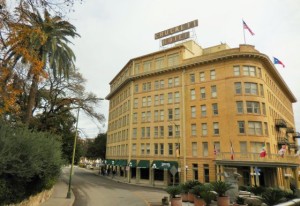
Modern Era (2009-Present) – 2012 Presidential Election: AMLO
AMLO ran for president again in 2012.
Presidential Electoral history for PRD
| Election year | Candidate | # votes | % vote | Result | Note |
| 1994 | Cuauhtémoc Cárdenas | 5,852,134 | 16.5 | Defeated | |
| 2000 | Cuauhtémoc Cárdenas | 6,256,780 | 16.6 | Defeated | Coalition: Alliance for Mexico |
| 2006 | Andrés Manuel López Obrador | 14,756,350 | 35.3 | Defeated | Coalition: Coalition for the Good of All |
| 2012 | Andrés Manuel López Obrador | 15,848,827 | 32.4 | Defeated | Coalition: Broad Progressive Front |

Principles
The PRD believes that Mexico currently has major problems of economic and social inequality that halt social development and affect liberty and democratic coexistence. Which is why the PRD has developed the following principles for their political party.

Democracy
The PRD considers democracy to be the most fundamental principle that it hopes to establish in Mexico. The PRD believes that democracy is the political regimen that should be established in society because the ruling power goes to the people through voting. Which is why democracy rules the internal organization of the party. The PRD believes that democracy in Mexico is strengthened by an open, democratic, and transparent system of parties. The PRD acknowledges the diversity of Mexico and is committed to preserve and develop it. The PRD is also committed to a secular state in which there can be liberty, tolerance, and coexistence between all people.
Human Rights
The PRD is against any form of segregation or discrimination.
The PRD fights to promote, expand, respect, protect, and guarantee the exercise of human rights understood in its most broad meaning which includes:
- civil rights
- political rights
- economic rights
- social rights
- cultural rights
- environmental rights
- right to access to information
- right to solidarity for the collective benefit for all citizens
- and rights of ethnic groups
- The PRD also emphasizes these rights in regards to the following groups
- young people
- children
- women
- senior citizens
- the lesbian, gay, transsexual, transgender, bisexual and intersexual community
- migrant workers in our country and abroad.
The PRD recognizes indigenous communities as equal in regards to the human rights that they are entitled to, with differences that must be respected.
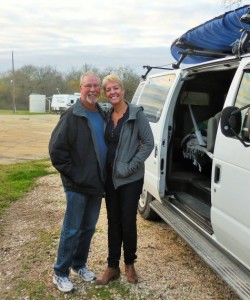
These differences include their:
The human rights that they are entitled to include:
- right to self autonomy
- right to their land
- right to the use of their land
- right to conservation
- right to collectively use their natural resources
- right to access to economic development.
The PRD believes it is an obligation of the state to support with public policy and methods necessary to guarantee the development of all indigenous communities and towns.
The PRD sustains the fundamental principle of the San Andrés Accords.
The PRD is also against the death penalty, militarization of police, and military jurisdiction to crimes and misdemeanors of civic order.
Substantive Equality and Diversity in Regards to Sexual Orientation
The PRD believes in the equality between women and men as well as gender mainstreaming.
The PRD champions the access to the same treatment and opportunities between men and women.
The PRD strives for women to have access to exercise their human, sexual, and reproductive rights and to make choices about their body in a free and informed manner.
The PRD promotes gender equality in all social spheres which are manifested in patriarchal and machismo-based power relations that threaten the dignity of women.

Education, Science, and Culture
The PRD defends the educational principles that inspired the third article of the constitution and alights itself with an education -from beginning education to university- that is secular, public, free, scientific, and of quality, as well as an education that strengthens national identity.
Economy
The PRD, since its founding, believes that the state should have jurisdiction and should intervene in the fundamental and prioritized areas of the productive sector, as are nutrition, production of clean energy, telecommunications, the process of technology, infrastructure, communication mediums, financial systems, and technology trade for the national and regional development, restraining ownership and dominion of hydrocarbons and radio-electric spectrum for the nation and the recovery of basic goods that guarantee our sovereignty.

Social Justice
The PRD defends the rights of every Mexican worker, the preservation and expansion of social security and the permanent improvements of contractual conditions.
Environment
The PRD adopts the principle of sustainable development as well as preserving the cultural environment. The PRD does this to satisfy the necessities of current and future generations, based on the responsible use of natural resources, including new tools for development that would allow for the protection and recovery of the environment with comprehensive public policy.
International Scope
The PRD supports the self-determination of communities, non-intervention, legal equality of states, the cooperation for national development and sovereignty and the respect and incorporation of international treaties to our legislation.
Internal Organization
The PRD consists of: congresses, councils, and executive committees, an assembly, and a committee. The nation, states, and municipalities have the same organization. They each have a congress, a council, and an executive committee. Congress has the most authority, the council coordinates communication between congresses, and the executive committee applies the guidelines set in place by the council. The maximum rule for any elected position is three years. The national, state, and municipal president cannot be reelected for the same position. The PRD has an anti-discriminatory policy for its internal elections. The PRD has policies put in place that guarantee the inclusion of women, young people, and indigenous people.
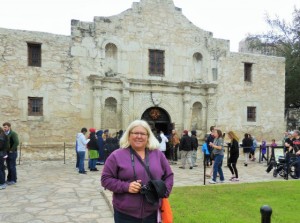
The National Congress is the maximum authority of the PRD. The National Congress approves the statue, the declaration of principles, the program, and the political organization of the party. 90% of the National Congress is made up from delegates elected in municipal assemblies. The rest of the National Congress is made up by two delegates for each State Council, the presidents of the State Councils, the members of the National Executive Committee, and by the elected delegates of the National Council that shall not exceed 4% of the total delegates in the Party’s Congress. The National Council chooses the majority of its 21 member executive committee except for the president of the party, the secretary of the party, and the parliamentary group coordinators.

In 2014, the PRD became the first political party to have internal elections organized by the Federal Electoral Institute where those affiliated with the party could vote for the members of the National Congress and Council as well as State and Municipal Councils. 2 million people participated in the internal elections which is about 45% of those affiliated with the party.
Currents
Inside the PRD, there are “currents” that are dedicated to specific approaches and stances or about specific themes or movements.
These include:



